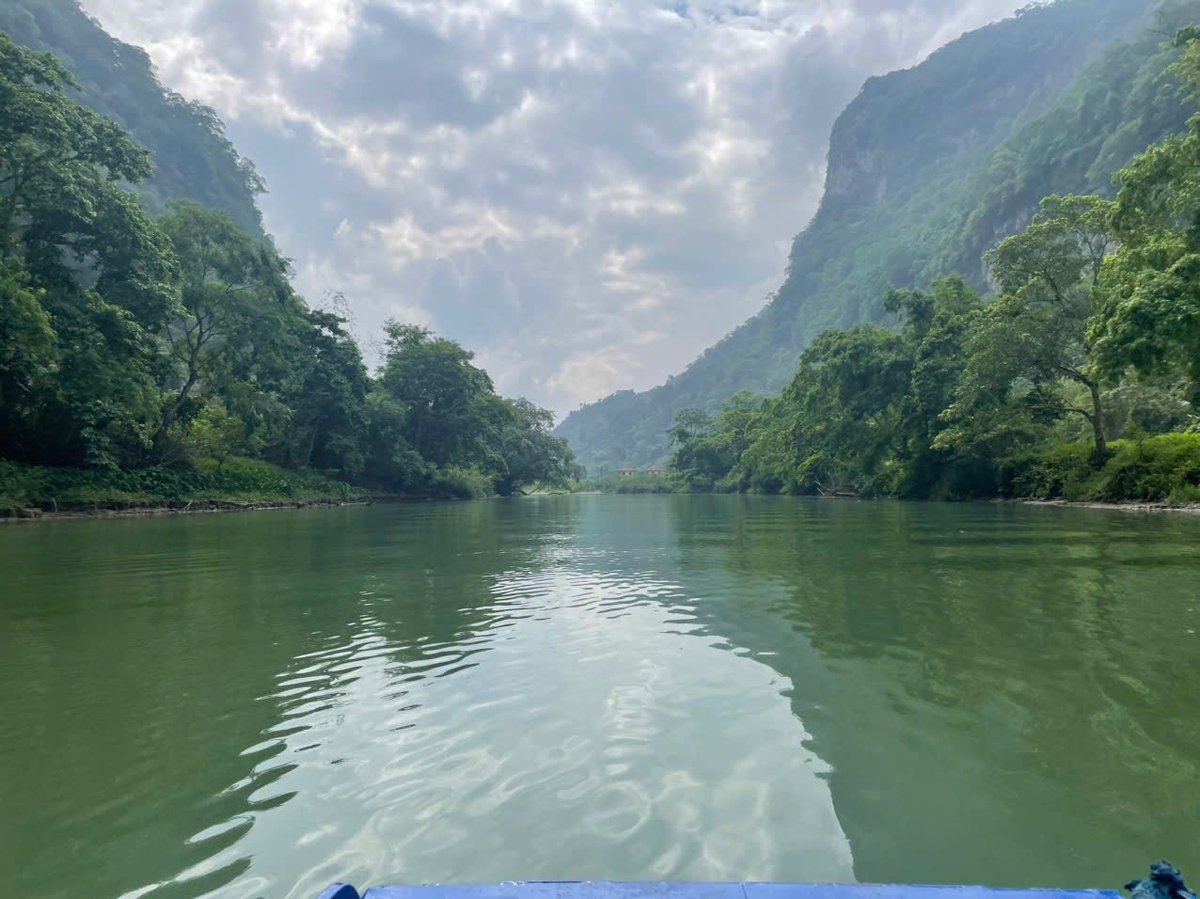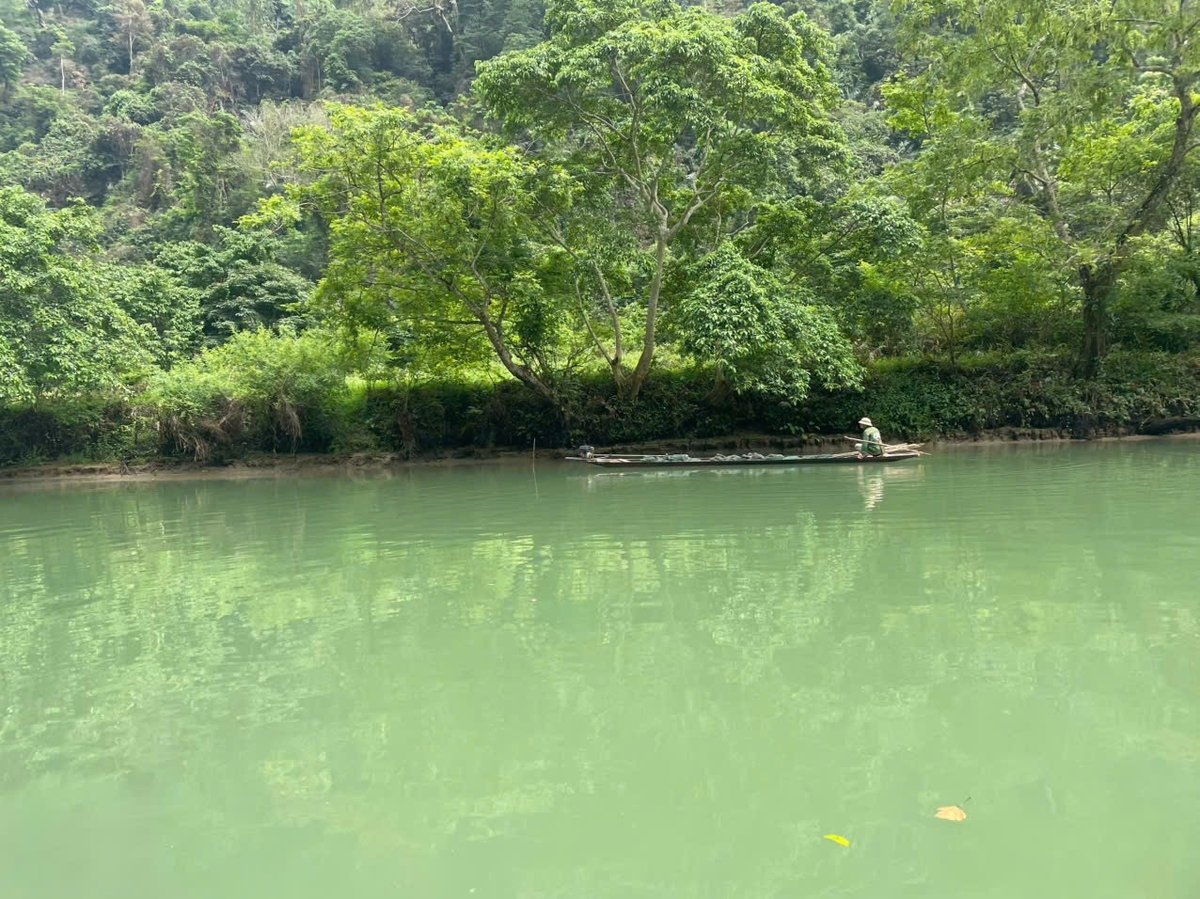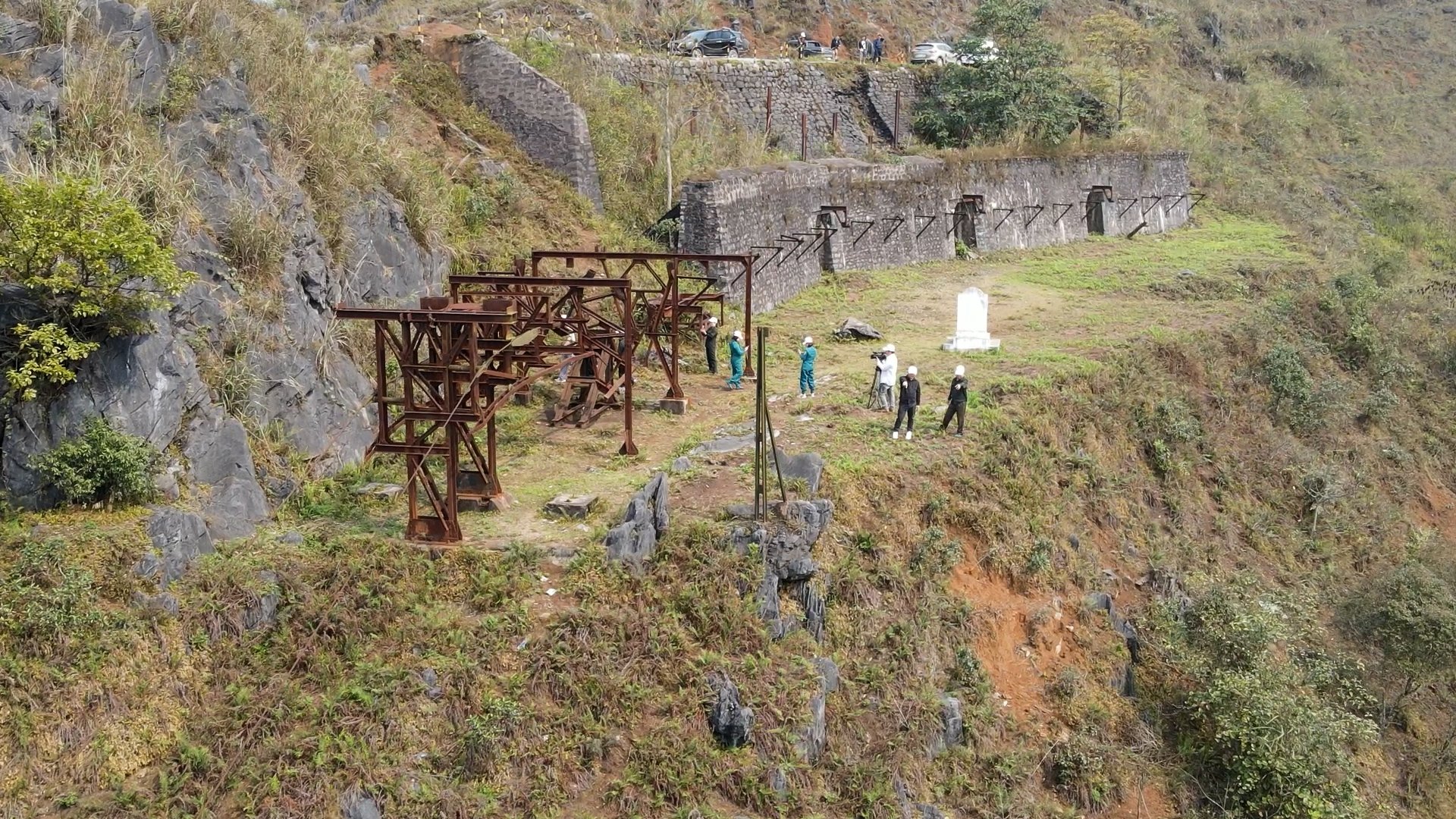October 28, 2025 | 09:17 GMT +7
October 28, 2025 | 09:17 GMT +7
Hotline: 0913.378.918
October 28, 2025 | 09:17 GMT +7
Hotline: 0913.378.918
The northern communes of Thai Nguyen Province (previously Bac Kan Province before merging) have long been renowned for their pristine landscapes, pure air, and rich Indigenous cultures. The verdant lungs of the Viet Bac mountain range are well-preserved special-use forests. The enchanting charm of the local communities, in conjunction with the untamed nature, is irresistible to visitors.
The eco-tourism development strategy for 2021–2030 anticipates that the three special-use forests, Ba Be National Park, Kim Hy Nature Reserve, and Nam Xuan Lac Species–Habitats Conservation Area, will develop into a new "green development hub," rendering Thai Nguyen an appealing eco-tourism destination in the northern midlands and mountains region.

In recent years, Ba Be National Park's special-use forests have been well protected. Photo: Ngoc Tu.
Ba Be Lake is a prominent feature of Ba Be National Park, which is a natural treasure spanning over 10,000 hectares of special-use forests. Nature has endowed Ba Be with a diverse ecosystem, caverns, rivers, waterfalls, and breathtaking gorges, resulting in a distinctive and uncommon eco-tourism destination. Additionally, the region is home to hundreds of rare flora and fauna species.
Ba Be Lake is the focal point of the park, where the extensive forests that extend to the horizon meet crystal-clear waters. Visitors can indulge in boat rides, inhale the fresh air, and behold towering, gigantic trees, such as the gigantesque cau nien, that few can grasp, casting reflections onto the lake's surface.
Aquatic and forest excursions, as well as destinations such as Puong Cave, Dau Dang Waterfall, Ao Tien, and Ba Be National Park, have attracted numerous investment projects for eco-tourism development, due to the captivating scenery of Ba Be Lake and the consistent annual visitor numbers. Nevertheless, investment levels have not yet corresponded to the potential in recent years. The majority of the current tour routes are spontaneous and do not include any high-end resort highlights or distinct products. Consequently, the 2021–2030 eco-tourism development plan emphasizes the development of infrastructure, brand promotion, and the explicit planning of routes, destinations, and products.
The objective of the validated eco-tourism strategy for Ba Be National Park is to implement sustainable forest management. It includes developing resort products, environmental education, adventure sports, and community-based tourism by leasing forest environments, opening six waterway routes, and planning tourism spaces across 14 areas. Additionally, it anticipates the opening of numerous walking trails.
The Bac Kan Province's plan expects that Ba Be Lake tourism will attract 150,000 visitors annually by 2025, with 10% of these visitors being international, resulting in the employment of 800 individuals. By 2030, these figures will rise to 450,000 visitors and 2,000 sustainable jobs, which will have a positive impact on the local economy. This growth is founded on the principles of sustainable development, conservation, and community benefits.

Building tourism in Ba Be in conjunction with the preservation of ethnic cultural identities. Photo: Ngoc Tu.
The Kim Hy Nature Reserve is home to more than 15,000 hectares on special-use forests. Kim Hy is a pristine natural marvel due to its ancient towering trees, pristine streams and waterfalls, mysterious caves, rare flora and fauna, and rugged terrain.
Low stilt houses are dispersed along the forest edge, and the asphalt road that cuts through Kim Hy's forest appears to be a silk ribbon when viewed from above. In the summer, the act of walking beneath the canopy provides a refreshing and chilly feeling. The traditional cultures of the Dao, Tay, and Nung ethnic communities are well-preserved in the surrounding buffer zone.
Mr. Phan Tieu Tuan, the Deputy Head of Forest Management Unit No. 6, which is responsible for managing Kim Hy Nature Reserve, stated, "The reserve is situated on high mountains and has a cool climate. It also has numerous picturesque forest trails." Nevertheless, the development of tourism is still restricted by inadequate infrastructure and challenging transportation. To date, it has primarily attracted students, youthful explorers, and researchers.
The approved plan suggests eco-tourism models that incorporate conservation and capitalize on forest environment leasing mechanisms. Experiential centers for visitors will include tourist destinations such as Tat Chat Waterfall, Minh Tinh Cave, Doi Cave, Vu Mun Negen Forest, and the Lung Sien community tourism village.
Promotion, infrastructure development, investor attraction, and livelihood generation for local communities will comprise Kim Hy Nature Reserve's tourism initiatives in 2025. Our objective is to establish the "Kim Hy Eco-Tourism" brand on Vietnam's green tourism map, shape specialized products, and extend scale between 2026 and 2030. Activities such as forest trekking, biological research, and investigating local festivals have the potential to become key products that attract both domestic and international tourists.

The ancient towering trees of Nam Xuan Lac Forest are a great attraction to explorers. Photo: Ngoc Tu.
The Nam Xuan Lac Species–Habitats Conservation Area encompasses more than 10,000 hectares of special-use forest. It is home to numerous endemic species, scenic forested mountains, valleys, and ethnic villages, all of which are part of a transitional sub-mountain ecosystem.
According to Mr. Luong Quoc Hai, Director of the Nam Xuan Lac Species–Habitats Conservation Area Management Board, the region is home to 400 plant species and more than 200 animal species, including uncommon species such as the black-faced langur and pheasant. At present, the emphasis is on the development of tourism and conservation. Over one hundred years ago, the French constructed numerous tunnel systems and nearly 20 kilometers of stone barriers to facilitate mineral extraction at the site. The two stunning valleys located here are key to tourism development.
The French surveyed and exploited the Cho Dien zinc-lead mine over a century ago, and it still contains vestiges such as ore cable systems, mountain trails, and tunnels. These sites attract individuals interested in the study of geology and history.
Through 2030, the eco-tourism development strategy seeks to establish attractions such as Muc Bridge, Lung Trang and Lung Ly, which will connect with natural landscapes and historic sites. The region's objective is to attract investors for forest environment services by 2025. The completion of routes and destinations from 2026 to 2030 will generate revenue from accommodation, experiential, and environmental education services, thereby contributing to the financial self-sufficiency of conservation. Nam Xuan Lac is on the brink of becoming a "new star" on Thai Nguyen's tourism map, as it aspires to become a prominent eco-tourism destination at the provincial level.
A common feature across these three projects is a harmonious approach: developing eco-tourism not merely by exploiting resources but by conjoining conservation, enhancing forest values, and improving community livelihoods. The three plans all prioritize sustainable forest management by implementing mechanisms such as forest environment leasing, investing in green infrastructure, and developing products that reflect local identities.

French engineers constructed the mineral cable system on Phja Bjooc Peak more than a century ago. Photo: Ngoc Tu.
Infrastructure challenges, workforce shortages, and media activities have all contributed to the limited availability of eco-tourism in certain northern special-use forests, despite the abundance of potential. Nevertheless, the voyage is becoming more convenient and expedited due to recent enhancements in transportation infrastructure, such as the comprehensive upgrade of the CT.07 expressway that connects Hanoi to Thai Nguyen.
The three special-use forests, Ba Be National Park, Kim Hy Nature Reserve, and Nam Xuan Lac Species–Habitats Conservation Area, are not only natural treasures but also strategic resources for the continued development of sustainable eco-tourism. Green tourism is poised to become a significant contributor to local economic development in the near future, as a result of the clear visions, appropriate orientations, and decisive involvement of local authorities and communities.
Translated by Linh Linh

(VAN) SEAMAP and ROMONA sign a 2025 - 2028 Memorandum of Understanding, marking a new chapter in Viet Nam’s marine geodesy and positioning technology development.

(VAN) UNICEF, in cooperation with the Ministry of Agriculture and Environment, has provided 800 water storage tanks, 800 essential hygiene kits, and 80,000 water purification tablets to people affected by the recent floods.

(VAN) More than 32,000 plant genetic samples currently preserved in Vietnam’s National Genebank are laying the foundation for the establishment of a National Botanical Garden and the development of climate-resilient crop varieties.

(VAN) Viet Nam is emerging as a strong potential contributor to the ASEAN Economic Community, thanks to its outstanding competitiveness in manufacturing and production.

(VAN) On October 25, the VDDMA received emergency aid from Singapore for people affected by recent disasters.

(VAN) The Viet Nam Academy of Science and Technology and the Finnish Meteorological Institute have signed a five-year Memorandum of Understanding.

(VAN) Amid severe salinity intrusion, the groundbreaking of Dong Tam Water Plant marks a milestone for sustainable water security in the Mekong Delta.